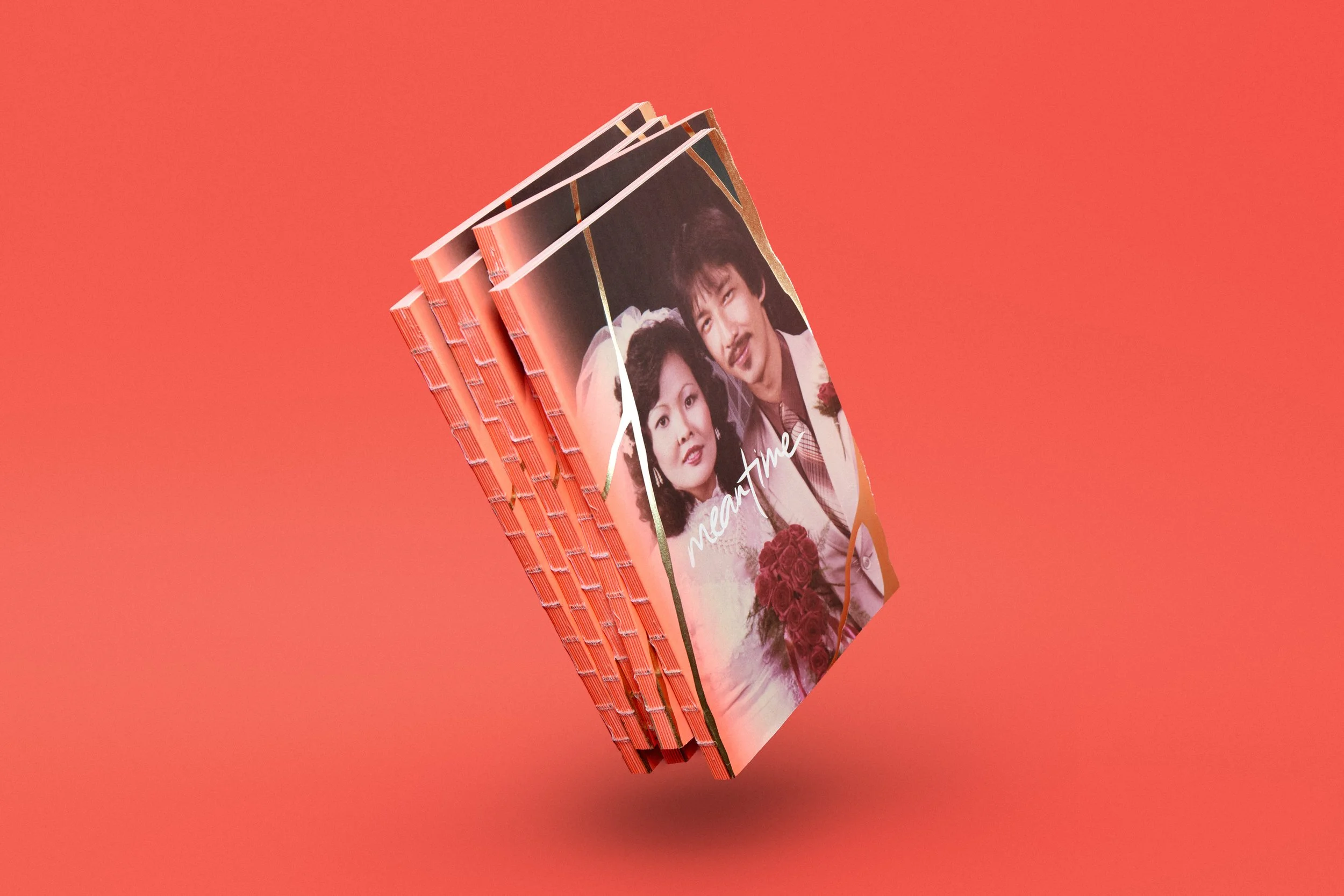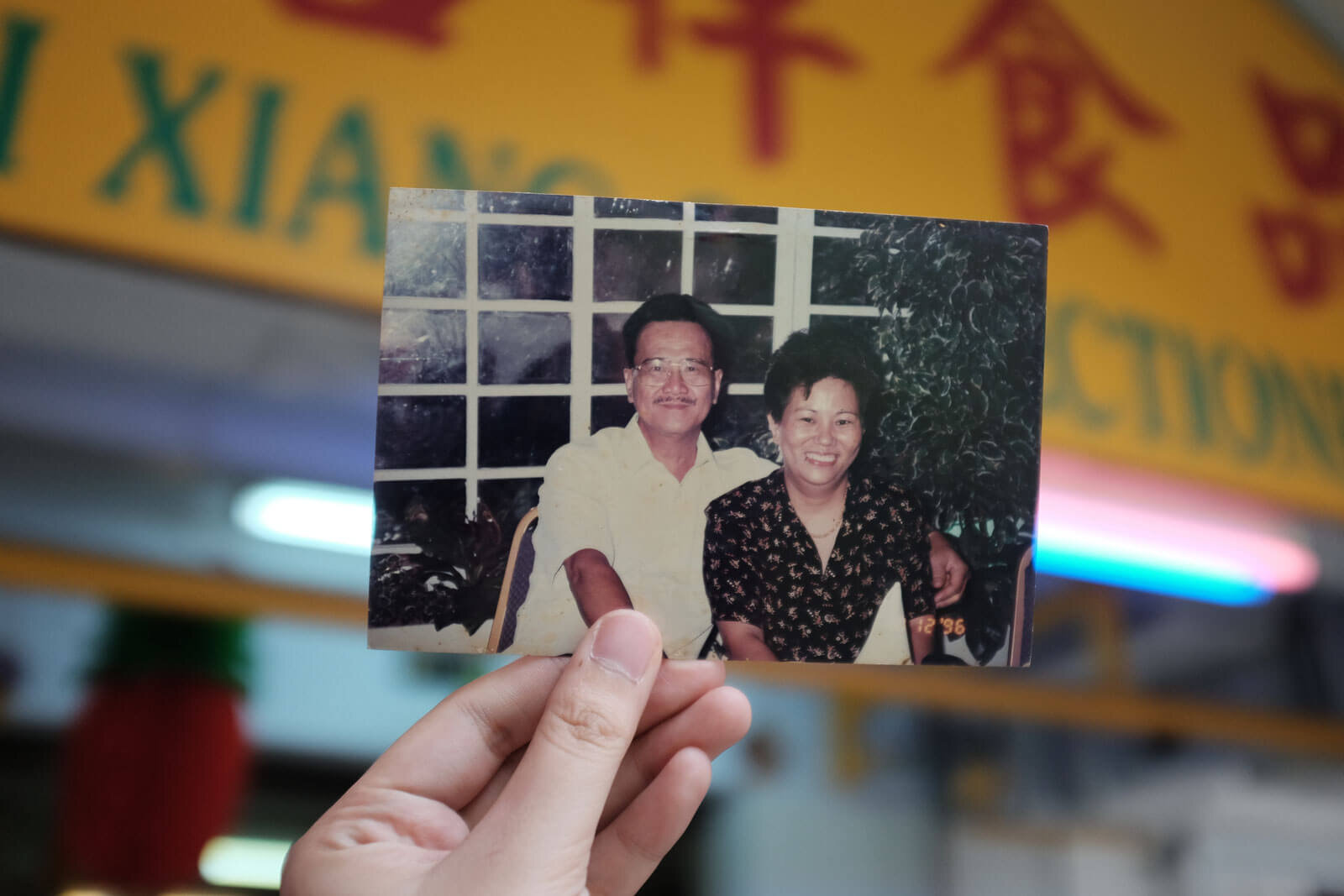A forbidden love in the time of war
Issue #1
By Pang Xue Qiang
It was 1945, the end of the Second World War, and the year Monica Choon was born.
She grew up near Guillemard Road, with many Malay neighbours. As a young girl, she was teased, taunted and at times, treated as an outsider.
“Whenever my neighbours (Malay boys older than me) saw me passing by, they would stop me. They would form a human chain to block me. And they would sing Japanese Rhumba ai-yai-yai to tease me.” It was a popular ditty penned and performed by Japanese immigrants before the Second World War. “They would say, balik kampung.”
“I didn’t think much about it. I thought they were just being playful. I didn’t understand why.”
But the sneers got under her skin, and stayed with her. It was something she would only make sense later in life.
Her Cantonese mother Tham Chee Fong raised her as a single parent. Her father, though, was absent. He was the missing figure in the family, and her mother never talked about him either.
For most part of her early life, Monica lived with the enigma. When she probed, her mother would only tell her: “Daddy went to work one day, and didn’t come back.”
Still, it was something that she could neither contend with nor comprehend. But she did not question further. “I was never close to my mother. She was always drinking and crying. I never really understood her.”
Then, when she was about 12, she stumbled on the first piece of the puzzle. The neighbour boys who had playfully bullied her blurted out that she is, in fact, half-Japanese.
She was blank, and confronted her mother about it. “I heard Daddy is Japanese...”
That was when her mother took out pictures of her father, baby clothes that were gifted from him and letters that her mother sent to a Japanese address in Hokkaido returned, unopened.
“She wasn’t willing to share more details. My mother had this bag of sorrows in her. I was also too young to feel anything then. I had not developed the emotions to process it. But after that, things started to make sense.”
Her mother did not give up hopes of finding her father. “When you grow older, you must look for him,” she had told Monica.
That marked the start of Monica’s 40-year search for her lost Japanese father.
. . .
Doko ikuno
Koko irasha-i-ne
Chotto anone
Ohayo-gozaimas
CHORUS
Japanese Rhumba ai-yai-yai
Japanese Rhumba ai-yai
Japanese Rhumba ai-yai-yai
Ohayo-gozaimas
Nani mamasan
Hayaku papasan, hai
Ano-ojo-san
Chotto matte kudasai
CHORUS
Japanese Rhumba ai-yai-yai
Japanese Rhumba ai-yai
Japanese Rhumba ai-yai-yai
Chotto matte kudasai
INSTRUMENTAL
Nani anone
Sutekine kono-uta
Nani suruno
Hello, Konnichiwa
CHORUS
Japanese Rhumba ai-yai-yai
Japanese Rhumba ai-yai
Japanese Rhumba ai-yai-yai
Hello, Konnichiwa
Konbanwa - goodnight
Konbanwa - goodnight
Konbanwa - goodnight
Oyasuminasai!
Anone!
*This little ditty originated from Hawaii – probably penned and performed by immigrant Japanese before the Second World War.
We are sitting at a cafe along Guillemard Road, located in a quiet corner away from the bustling traffic. Monica grew up in a kampung nearby. But now, the area comprises mostly condominiums.
Monica’s unlined face belies her 73 years. She tells me it’s the Japanese genes.
When she was a month old, the Japanese surrendered to the British, ending their occupation of Singapore during the Second World War.
Then, the Japanese military was hastily repatriated. And among its ranks was her Japanese father, Kenji Murai, a civilian aircraft technician who came to Singapore with the Occupation Forces in 1942.
The fateful day he left for work was also the last time they saw him. Her father never came back. He did not have the chance to say goodbye.
When Monica was born, her mother delayed her birth registration. The post-war period was a time of anti-Japanese and strong nationalist sentiments.
“After the war, it was a sensitive period. My mother didn’t utter a word about my father. She kept it to herself.”
She registered a fake name to her father, and avoided using a Japanese name for Monica. Instead, she gave her the surname Choon, which was the Cantonese transliteration of the name of her father, Kenji Murai.
Monica’s mother had owned a cafe at Happy World, a popular amusement park and entertainment outlet from the 1930s to 1960s. Located near the old Kallang Airport, it was popular among the Japanese. During the war, the Japanese turned it into gambling dens. It was precluded from raids and was often crowded, as the bright lights continued to attract many. The popularity helped the Japanese profit substantially from the revenue collected from tax and license fees. While the Japanese were not allowed in the gambling dens, they patronised the cabarets and nightclubs there.
She met her father while working at the cafe at Happy World. They fell in love, and later married in 1944, despite apprehensions and disapprovals from family and friends about the mixed marriage.
“My mother wouldn’t dare say anything about her husband being Japanese. She would be in trouble. She would be taken in as a spy.”
Under the Japanese Occupation, there were shortages of medical supplies, food and water. But her father secretly gave more rations of rice, sugar and cooking oil to the neighbours, which were sought after at inflated prices in the black market.
“My father would bring back sacks of rice and cartons of condensed milk and distribute them to family and neighbours. Later on, people were slowly convinced. He was a kind man and a good-looker.” She knew little about what her father was like save for these accounts, which were one of few precious memories she has of him.
Monica takes us back in time to her childhood growing up at Guillemard Road.
“I’ve
only
seen
my
father
in
photos.”
Monica showed me treasured photos of her parents at the cafe.
They were wrinkled and yellowed with time, frayed at the edges like a faded memory. Gingerly, she traced her fingers on them, as if trying to decipher a hidden message in Braille. A missed connection.
Her mother looked stunning in a figure-hugging cheongsam dress, and her father, a charmer with round-rimmed glasses.
Around the 70s, the search for Monica’s father first brought her to the Japanese Embassy. But she was simply told that there were many of such cases, and they were unable to help. It was an endeavour she had to embark herself.
“We are war babies, and I thought to myself, ‘Where got hope?’.
“After the Vietnam War, I saw a lot of war babies reuniting with their families. Their American fathers had looked for them. They were so lucky. I thought I had lost all hopes of finding my father.”
She had worked in the travel industry and would also seek the help of Japanese friends whom she had met on the job. Once, a Japanese airline official had traced through personal contacts someone with the same name and antecedents who had passed away, leaving three sons.
“I thought that was the last straw,” Monica shared. “If my dad is not around, there’s no point. I give up. His Japanese family would not accept me.”
Later, a Japanese journalist based in Singapore learnt about her story and offered to help. He published the story in the Hokkaido Shimbun Press, and with it a picture of her father Kenji Murai.
A few days later, a man who identified himself as the brother of Mr Murai’s second wife reached out to the paper. They wanted to meet her.
It was 1998, and Monica – then 53 – finally found out who exactly was her father and where he lived. They arranged to meet at Hokkaido.
There, Monica learnt that her father had remarried. She has three Japanese half brothers and one half sister. Her father had died in 1972 at the age of 56.
At the tearful reunion, her half brother told Monica that her father had told them about his Singapore family. “Father said, ‘I have a treasure in Singapore’.
“So
now
I
know,
the
treasure
is
you.”
Sitting across Monica, there were moments of silence and contemplation, as we ruminated over love.
Her parents loved in a tumultuous time in history, then lost it all in a sudden. For Monica, after decades suffering the pain of not knowing her father, she found closure.
“My mother and father had a beautiful love story. But it was short-lived. When people ask me, I say I am mixed blood. My father is Japanese, and my mother is Cantonese. It makes me proud.”
Today, Monica is a grandmother, who is single after two failed marriages. She has a daughter, whom she lives with, from the marriage with her first husband.
“Maybe I’m too strong a person,” Monica mused. “Men prefer the wife to be a geisha. You see, during dating, the man will please you. But after marriage, the man will expect you to please him.”
“It’s too late for me to be a geisha. Maybe next life.”
Issue 5 drops
Broken heart, broken book. Explore Singapore's past through the lens of breakup stories.
Read other stories:
Can you find love with a single photograph?
It was May 26, 1991; a good day to be married for Sajeev and Sheeja. The astrologer said so, the parents were convinced, and the gods were in favour. Today, in a small photo studio – nearly 3 decades after their arranged marriage – the couple now help young men find love from home thousands of miles away.
Falling for the girl next door
Kampung Kuchai was Zainal Ismail’s entire world. Here, the people – who were descendants of the orang laut, Singapore’s native inhabitants – stood out larger-than-life. One of them was Norsiah, the soft-spoken girl who lived a few doors away.











